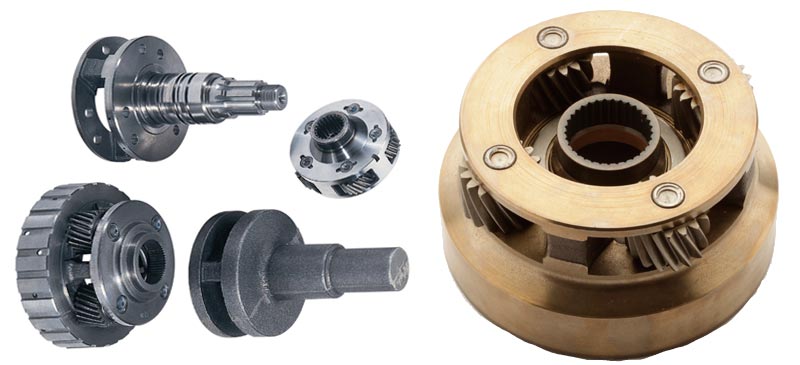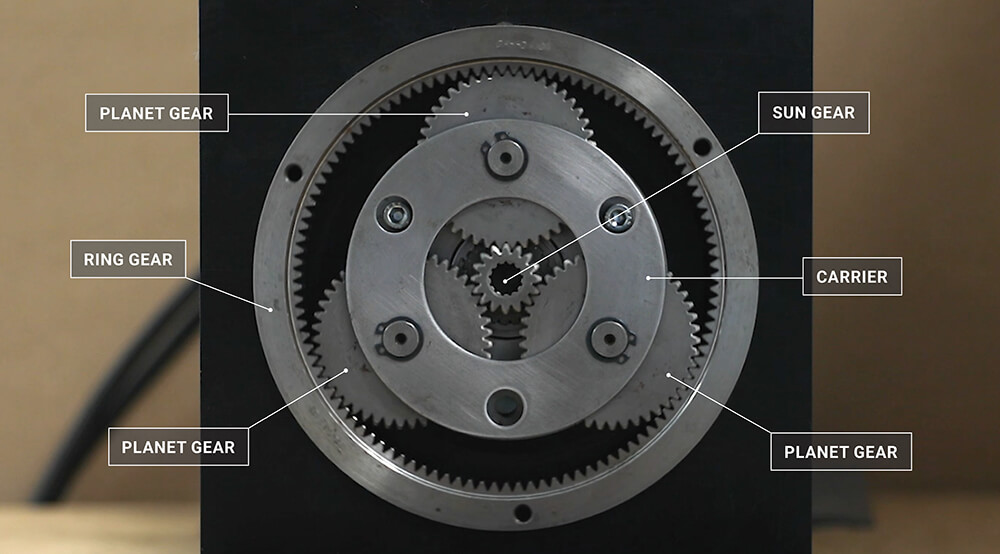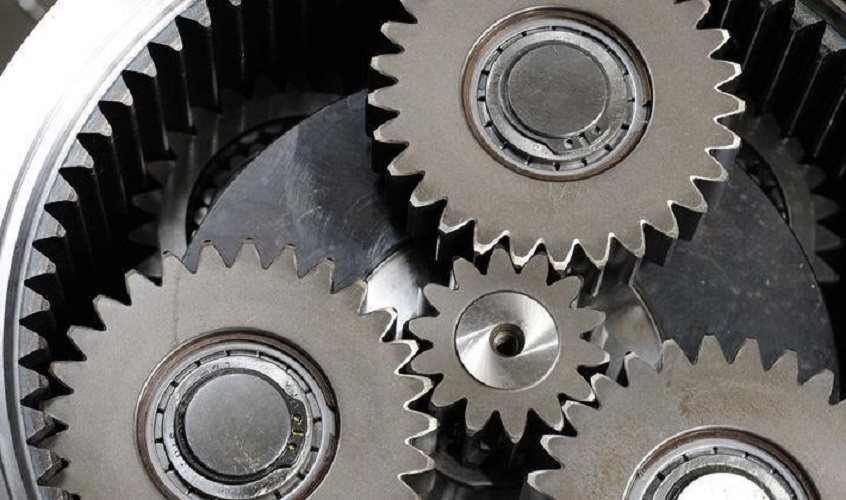Product Description
| 810-35199-6651 | Middle bridge basin Angle tooth (37/12) |
| Q50 0571 2 | 6.3 * 32 – ST – A4C cotter pin |
| 712W35125-0571 | Differential adjustment nut |
| 810W93420-0183 | Tapered roller bearing 32571 |
| MQ6571163416 | Differential housing screw |
| 812-35105-0194 | Differential housing |
| 810W9571-5718 | Differential planetary wheel gasket |
| 710W55711- | |
| Q43745 | Retainer ring |
| 810-35199-6598 | Rear axle basin Angle teeth (12/37) |
| 810-35301-6116 | Rear axle main housing reduction assembly |
| WG7117329065 | Rear axle input flange |
| WG7117329018/329001 | Rear axle input oil seal |
| 810W35601-0040 | Bearing housing (rear axle) |
| 812-35105-0061 | Rear axle wheel difference shell |
| WG91571014 | bearing |
| WG91571571 | bearing |
| WG9981032222 | Bearing |
| WG9981032313 | Bearing |
| HR9-ZXJXLB | Steering knuckle repair kit |
| WG9100443050 | Front brake pad |
| 420HP Engine(D12.42) | ||
| VG157171050 | Rear oil seal | 1 |
| VG1246571005 | Front oil seal | 1 |
| VG260571208 | Flywheel gear ring | 1 |
| AZ1242571561 | Flywheel assembly | 1 |
| VG1246030011/12 | Connecting rod tile | 1 |
| VG1246571034/35 | Main bearing | 1 |
| AZ1246030007 | Connecting rod assembly | 6 |
| VG1246030013 | Connecting rod bolt | 12 |
| VG1246030015 | Piston assembly | 6 |
| VG1540030005 | Piston ring | 1 |
| VG1246030002 | Piston pin | 6 |
| VG1246571571 | Cylinder liner | 6 |
| D12.42-XLB | Engine repair kit | 1 |
| VG1246040571 | Cylinder pad | 6 |
| VG1246050571/22 | Intake and exhaust valve | 1 |
| VG1246 0571 1 | Valve push rod | 12 |
| VG1246 0571 1 | Valve tappet | 12 |
| VG1246060091 | Belt | 1 |
| VG1246060005 | Automatic tensioning wheel | 1 |
| VG1246060094 | Pump assembly | 1 |
| VG1246060088 | Belt | 1 |
| VG1246060051 | Fan leaves | 1 |
| VG1246070012 | Oil cooler core | 1 |
| VG1246080002 | High-pressure pipeline | 1 |
| VG1246090017 | generator | 1 |
| VG1246090002 | starter | 1 |
| VG124611571 | Turbocharger | 1 |
| VG1246130008 | Air compressor | 1 |
| VG12465716 | Fuel injector assembly | 6 |
| WG9731471571 | Steering vane pump | 1 |
| VG1246070031 | Oil filter | 2 |
| VG1540080110 | Diesel filter | 1 |
| VG | Diesel filter | 1 |
| WG9725195712/103 | air filter | 1 |
| After-sales Service: | Online Support |
|---|---|
| Warranty: | 6months |
| Type: | Chassis |
| Certification: | ISO14001 |
| Driving System Parts: | Suspension |
| Electrical System Parts: | Lighting |
| Samples: |
US$ 3/Piece
1 Piece(Min.Order) | |
|---|

How do you calculate the gear ratio involving sun, planet, and ring gears?
The gear ratio in a planetary gear system can be calculated by considering the number of teeth on the sun gear, planet gears, and ring gear. The gear ratio determines the relationship between the input speed and the output speed of the system. Here’s how you can calculate the gear ratio:
- Step 1: Count the Teeth:
Count the number of teeth on the sun gear (S), the planet gears (P), and the ring gear (R). These numbers represent the respective gear’s tooth count.
- Step 2: Determine the Gear Arrangement:
Identify the gear arrangement. In a simple planetary gear system, the sun gear is at the center, surrounded by planet gears, and enclosed by the ring gear.
- Step 3: Calculate the Gear Ratio:
The gear ratio (GR) can be determined using the formula:
GR = (R + P) / S
Where:
- R represents the number of teeth on the ring gear
- P represents the number of teeth on the planet gears (assuming they have the same number of teeth)
- S represents the number of teeth on the sun gear
The resulting gear ratio represents the speed relationship between the input and output of the planetary gear system. A gear ratio greater than 1 indicates a speed reduction, while a gear ratio less than 1 indicates a speed increase.
It’s important to note that in more complex planetary gear systems, where there are multiple sets of planet gears or additional gears, the calculation of the gear ratio may involve considering multiple gear stages and their respective tooth counts.
In summary, to calculate the gear ratio involving sun, planet, and ring gears, you need to count the teeth on each gear and use the formula (R + P) / S, where R is the number of teeth on the ring gear, P is the number of teeth on the planet gears, and S is the number of teeth on the sun gear. This calculation provides the gear ratio that defines the speed relationship between the input and output of the planetary gear system.

How do planetary gears handle variations in direction and torque transmission?
Planetary gears are versatile mechanisms that can effectively handle variations in direction and torque transmission. Let’s explore how they achieve this:
- Direction Reversal:
Planetary gears are capable of transmitting torque in both forward and reverse directions. By changing the input and output connections, the direction of rotation can be reversed without the need for additional components or complex mechanisms. This makes planetary gears well-suited for applications where frequent changes in direction are required, such as automotive transmissions.
- Torque Amplification and Reduction:
One of the notable characteristics of planetary gears is their ability to amplify or reduce torque depending on the arrangement of gear components. Let’s consider a basic arrangement with a sun gear, planet gears, and a ring gear:
- Torque Amplification:
When the sun gear is the input and the ring gear is the output, the planet gears rotate on their own axes while also revolving around the sun gear. This arrangement allows for torque amplification, meaning the output torque can be higher than the input torque. This is particularly useful in applications where higher torque is required, such as heavy machinery or power transmission systems.
- Torque Reduction:
Conversely, by fixing the ring gear and using the sun gear as the output, the planet gears rotate on their own axes while also revolving around the fixed ring gear. In this configuration, the output torque is lower than the input torque, enabling torque reduction. This can be advantageous in applications where torque needs to be reduced, such as speed reduction systems or precision machinery.
- Combination of Gear Stages:
Planetary gears can be combined into multiple stages, with each stage having its own set of sun gears, planet gears, and ring gears. This arrangement allows for further variations in torque transmission. By connecting the output of one stage to the input of another, the torque can be further amplified or reduced, providing flexibility in power transmission systems.
- Custom Gear Ratios:
By selecting the appropriate sizes and numbers of teeth for the sun gears, planet gears, and ring gears, custom gear ratios can be achieved in planetary gear systems. This allows for precise control over torque transmission and enables the adaptation of the gear arrangement to specific application requirements.
In summary, planetary gears handle variations in direction and torque transmission through their ability to reverse direction without additional components, torque amplification or reduction based on gear arrangement, combination of multiple gear stages, and the ability to achieve custom gear ratios. These features make planetary gears a versatile choice for a wide range of applications requiring efficient and flexible power transmission.

Can you describe the role of sun gears, planet gears, and ring gears in planetary systems?
In a planetary gear system, each component—the sun gear, planet gears, and ring gear—plays a crucial role in the overall operation and functionality. Let’s explore the roles of these gears:
- Sun Gear:
The sun gear is a central component in a planetary gear system. It is typically located at the center and is driven by an input source such as a motor or engine. The sun gear receives the input power and transmits it to the other gears in the system. As the sun gear rotates, it drives the rotation of the planet gears, which, in turn, contribute to the overall gear operation. The size and number of teeth on the sun gear determine the gear ratio and torque characteristics of the system.
- Planet Gears:
The planet gears are gears that surround the sun gear in a planetary gear system. They are typically smaller in size compared to the sun gear and are connected to a carrier or arm. The planet gears mesh with both the sun gear and the ring gear. As the sun gear rotates, it drives the rotation of the planet gears. The planet gears exhibit both rotational and orbital motion. While they rotate on their own axes, they also orbit around the sun gear. This combination of rotational and orbital movement allows the planet gears to transmit torque and contribute to the overall gear reduction or amplification. The arrangement and number of planet gears can vary depending on the specific design and requirements of the system.
- Ring Gear:
The ring gear is the outermost gear in a planetary gear system. It has internal teeth that mesh with the planet gears. The ring gear remains fixed or stationary while the sun gear and planet gears rotate. The interaction between the planet gears and the ring gear enables the gear system to achieve gear reduction or amplification. The size and number of teeth on the ring gear also influence the gear ratio and torque characteristics of the system.
In summary, the sun gear serves as the primary driver, receiving the input power and transmitting it to the other gears. The planet gears rotate and orbit around the sun gear, contributing to torque transmission and gear functionality. The ring gear remains fixed and meshes with the planet gears, allowing for gear reduction or amplification. Together, these gears work in harmony to achieve the desired gear ratios, torque transmission, and overall operation of planetary gear systems.


editor by CX 2023-11-01